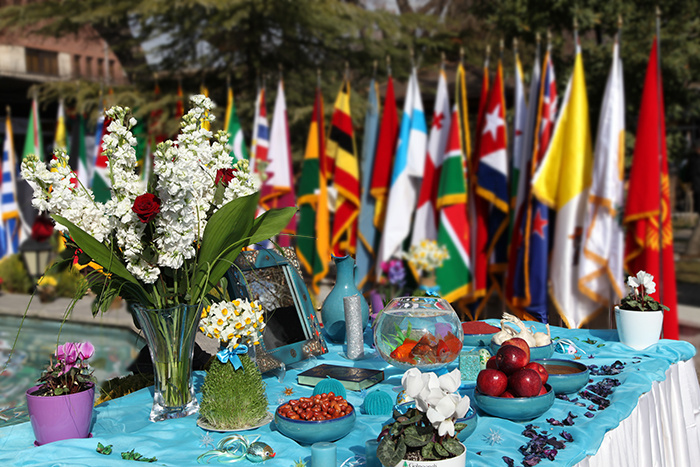Nowruz, an Opportunity to Bring the Region Closer

It was in December 2008 that a campaign run by expat Iranians in California, USA, called upon then UN Secretary General Ban Ki-moon to register Nowruz in its official calendar of traditions and celebrations. The letter reminded Ban Ki-moon that for thousands of years, nations across the world have been celebrating the first day of the spring, the March equinox, as the start of the new year.
The International Nowruz Day was proclaimed by the United Nations General Assembly in 2010, thanks to the initiative of countries that celebrate this holiday, Iran, in addition to Afghanistan, Albania, Azerbaijan, the Former Yugoslav Republic of Macedonia, India, Kazakhstan, Kyrgyzstan, Tajikistan, Turkey and Turkmenistan, to mark “an ancestral festivity” that reminds “the first day of spring and the renewal of nature.”
Nowruz has gained a stronger international foothold in the recent years, officially recognized in some European countries. During the yeas of Obama presidency, the US president spread the haft-sin table in the White House, as a sign of cultural diversity the country boasts of, and congratulated the event to Iranians.
Presuming that Nowruz has the potential to bring nations and cultures closer, the question is, which country or nation is best able to spearhead a campaign to promote and reinforce this convergence. And recognizing the status of ritual and its strong cultural influence, can it be used as a cultural-political tool, to implement cultural diplomacy and intercultural dialogue to serve regional convergence?
Twenty-five years after the collapse of the Soviet Union, Iran has still failed to achieve its goals in Central Asia and Caucasus, once a part of the larger Iranate civilization, and lags behind its regional and global rivals. The failure mostly stems from a lack of deep knowledge about culture, politics, and economy of these regions among the Iranian elite and lack of a clear-cut foreign policy, particularly immediately after the breakdown of the Soviet Union.
The rise of extraregional powers who were at collision with Iran and the active role of multinational corporations in Central Asia and Caucasus, whose knowledge of the region was much deeper than Iranians, also aggravated the situation for Iran. Nonetheless, with its historical roots running deep and vast in these spheres, Iran can still follow its goals relying on shared cultural elements and rituals.
Nowruz, in this regard, can play a key role in bringing nations and cultures closer, promotion of regional convergence, reinforcement of cultural exchanges, and preclusion of hostilities. Iranian cultural institutes have a special role in encouraging cultural dialogue, and drawing on the particular potential of Nowruz to expand Iran’s cultural influence and demonstrate the country’s intention to have friendly relations with nations across the region. The region is in dire need of cultural exchange more than ever, to prevent another Cold War. If Iran’s good will in establishing closer ties with its neighbors is clearly and persuasively demonstrated, it will significantly help correct the false image create by anti-Iran media about the country’s intentions and policies.

